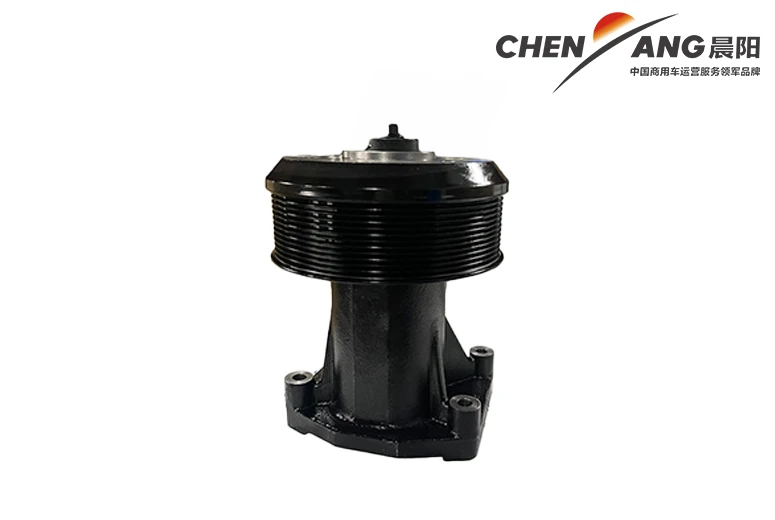transmission fluid cooler
Understanding Transmission Fluid Coolers Importance and Functionality
Transmission fluid coolers play a critical role in ensuring the optimal performance of an automobile's transmission system. The transmission is an intricate part of a vehicle, responsible for transferring power from the engine to the wheels. It is essential to maintain an appropriate operating temperature to ensure longevity and efficiency, and that's where a transmission fluid cooler comes into play.
What is a Transmission Fluid Cooler?
A transmission fluid cooler is a heat-exchanging device that helps regulate the temperature of the transmission fluid. Most commonly located in front of the vehicle's radiator, the cooler is designed to dissipate heat generated by the transmission fluid during operation, preventing overheating. The fluid circulates through the cooler, allowing it to release heat and draw in cooler air, thus maintaining the fluid—as well as the transmission—at optimal working temperatures.
How Does It Work?
The operation of a transmission fluid cooler is relatively straightforward. As the vehicle runs, the transmission fluid absorbs heat from the moving parts of the transmission, which is compounded by the friction and activity when the vehicle is under load, like towing heavy loads or driving in stop-and-go traffic. This heated transmission fluid is directed into the cooler, where it flows through a series of tubes or fins, maximizing its surface area for heat dissipation.
Ambient air, often coursed by the vehicle's motion or assisted by additional cooling fans, passes over these components. As the cooler air interacts with the warmer fluid, heat is transferred away, lowering the fluid's temperature. The cooled fluid then returns to the transmission, continuing the cycle.
Why is a Transmission Fluid Cooler Important?
transmission fluid cooler

1. Prevention of Overheating Overheating is a significant enemy of any transmission system. High temperatures can lead to fluid breakdown, reducing its effectiveness as a lubricant and causing increased wear and tear on transmission components. By maintaining a stable temperature, a transmission fluid cooler helps prevent these issues.
2. Enhanced Performance When the transmission fluid is kept within its optimal temperature range, it performs better. This means smoother shifting, improved fuel efficiency, and better overall vehicle performance.
3. Extended Lifespan of Transmission A cooler transmission fluid contributes significantly to the reliability and longevity of the entire transmission system. By reducing the thermal stress placed on the components, it helps prevent costly repairs or replacements.
4. Better Towing Capacity Vehicles that are frequently used for towing often experience increased stress on the transmission. An efficient cooler helps manage this added heat, allowing vehicles to tow heavier loads without compromising performance or safety.
Signs of a Failing Cooler
While transmission fluid coolers are generally robust, they can fail. Signs of a failing cooler may include a gradual rise in transmission fluid temperature, discolored or burnt fluid, or visible leaks. If you notice any of these indicators, it is crucial to have the system inspected by a professional to address potential issues before they escalate.
Conclusion
In summary, transmission fluid coolers are essential components in the drivetrain of modern vehicles. By effectively managing fluid temperatures, they enhance performance, prevent overheating, and extend the lifespan of transmission systems. Regular maintenance and timely inspections can prevent failures and ensure that the transmission fluid cooler continues to perform its vital role in keeping your vehicle running smoothly. Whether you’re a casual driver or an enthusiast, understanding the significance of transmission fluid coolers can help you make informed decisions regarding your vehicle’s maintenance and operation.
-
SINOTRUK HOWO 84 Electric Dump Truck for Eco-Friendly Heavy HaulingNewsJul.26,2025
-
The Fast 16-Gear Manual Transmission Assembly for Heavy TrucksNewsJul.25,2025
-
Mercedes Benz Actros 1848 42 Tractor Truck for Sale - Reliable PerformanceNewsJul.24,2025
-
High-Quality Water Pump Assembly for Sinotruk Trucks – Durable & ReliableNewsJul.23,2025
-
Premium Truck Engine Antifreeze Coolant Fluid for Heavy Duty VehiclesNewsJul.22,2025
-
FOTON View G7 Mini Bus: Affordable & Spacious TransportNewsJul.22,2025
Popular products

























